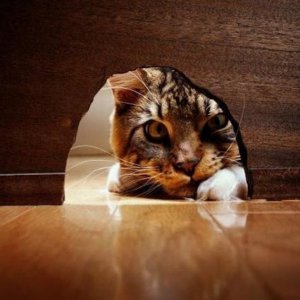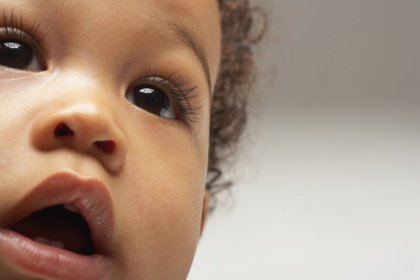Curiosity Didn’t Kill the Cat, It Made Him Stronger

As we age, we lose our curiosity and become accustomed and familiar with our reality and with ourselves. Our past experiences shape our perception of the world and teach us lessons that we carry with us our whole lives.
Old age begins when curiosity is lost
-José Saramago
We make assumptions based on these experiences and lessons learned, somewhat indiscriminately. When we are faced with an unfamiliar situation or problem, our minds perceive it as a space of confusion and conflict, a rift in our knowledge.
To resolve this discrepancy, our mind tends to fill the blanks with information obtained from things we do know, thanks to our experiences. This is how, for example, we create false details in true memories.
Assumptions
We make assumptions about other people’s behavior or about the future with ease. As we said before, we use these assumptions in order to eliminate uncertainty, which could feel very uncomfortable.
In terms of creativity, the problem with this is when the assumptions are founded on shallow arguments with little base in reality. Assumptions are not bad in essence, but become bad when curiosity is not their driving force.
It is this curiosity that, for example, creates progress within the scientific community. Every branch of science is fed by curiosity and the search for answers to life’s problems or simply a desire to know.
This is how curiosity stimulates our creative mechanisms. It faces them with a challenge which in turn requires the work of our cognitive processes, just like when we are children and we have the wonderful audacity to question everything.

Curiosity in children
Creativity and curiosity have a symbiotic and necessary relationship: without one you cannot have the other. It would be like eating without hunger, drinking without thirst, or kissing without love.
Children younger than 6 years old are at a stage in their lives where everything becomes a question. Their minds are a blank slate; they have no previous experiences with which to make assumptions. However, they do have a present experience which they are living and about which they want to know more, and they make the best of it.
Children ask many questions and learn quickly because they are curious. Their curiosity is what keeps them interested and eager to know more.
The role of curiosity in creativity
Creativity requires the open mind of someone who is not satisfied with recycled experiences, theories, and assumptions. All of the advances and innovations in history are born from challenging what we thought we knew at any given time and questioning the knowledge we have either inherited or considered well-established. Sometimes, we are wrong. (But it is well worth the risk.)
For example: painters experiment with colors and techniques that push the limits of what is already known, thanks to the curiosity which makes them pursue their art.
New, creative ideas are possible because someone was curious enough to experiment and question until they arrived to that point. The beauty of this is that when we are curious, we are less afraid.
We learn something new that sparks some intrigue, and we want to know more. There is no physiological need to be met, you do not even think about fear of failure or rejection or the unknown.
Curiosity is a thirst that must be satiated, an impulse that must be satisfied, often regardless of price. As the saying goes, curiosity killed the cat, but satisfaction brought it back.
As we age, we lose our curiosity and become accustomed and familiar with our reality and with ourselves. Our past experiences shape our perception of the world and teach us lessons that we carry with us our whole lives.
Old age begins when curiosity is lost
-José Saramago
We make assumptions based on these experiences and lessons learned, somewhat indiscriminately. When we are faced with an unfamiliar situation or problem, our minds perceive it as a space of confusion and conflict, a rift in our knowledge.
To resolve this discrepancy, our mind tends to fill the blanks with information obtained from things we do know, thanks to our experiences. This is how, for example, we create false details in true memories.
Assumptions
We make assumptions about other people’s behavior or about the future with ease. As we said before, we use these assumptions in order to eliminate uncertainty, which could feel very uncomfortable.
In terms of creativity, the problem with this is when the assumptions are founded on shallow arguments with little base in reality. Assumptions are not bad in essence, but become bad when curiosity is not their driving force.
It is this curiosity that, for example, creates progress within the scientific community. Every branch of science is fed by curiosity and the search for answers to life’s problems or simply a desire to know.
This is how curiosity stimulates our creative mechanisms. It faces them with a challenge which in turn requires the work of our cognitive processes, just like when we are children and we have the wonderful audacity to question everything.

Curiosity in children
Creativity and curiosity have a symbiotic and necessary relationship: without one you cannot have the other. It would be like eating without hunger, drinking without thirst, or kissing without love.
Children younger than 6 years old are at a stage in their lives where everything becomes a question. Their minds are a blank slate; they have no previous experiences with which to make assumptions. However, they do have a present experience which they are living and about which they want to know more, and they make the best of it.
Children ask many questions and learn quickly because they are curious. Their curiosity is what keeps them interested and eager to know more.
The role of curiosity in creativity
Creativity requires the open mind of someone who is not satisfied with recycled experiences, theories, and assumptions. All of the advances and innovations in history are born from challenging what we thought we knew at any given time and questioning the knowledge we have either inherited or considered well-established. Sometimes, we are wrong. (But it is well worth the risk.)
For example: painters experiment with colors and techniques that push the limits of what is already known, thanks to the curiosity which makes them pursue their art.
New, creative ideas are possible because someone was curious enough to experiment and question until they arrived to that point. The beauty of this is that when we are curious, we are less afraid.
We learn something new that sparks some intrigue, and we want to know more. There is no physiological need to be met, you do not even think about fear of failure or rejection or the unknown.
Curiosity is a thirst that must be satiated, an impulse that must be satisfied, often regardless of price. As the saying goes, curiosity killed the cat, but satisfaction brought it back.
This text is provided for informational purposes only and does not replace consultation with a professional. If in doubt, consult your specialist.







